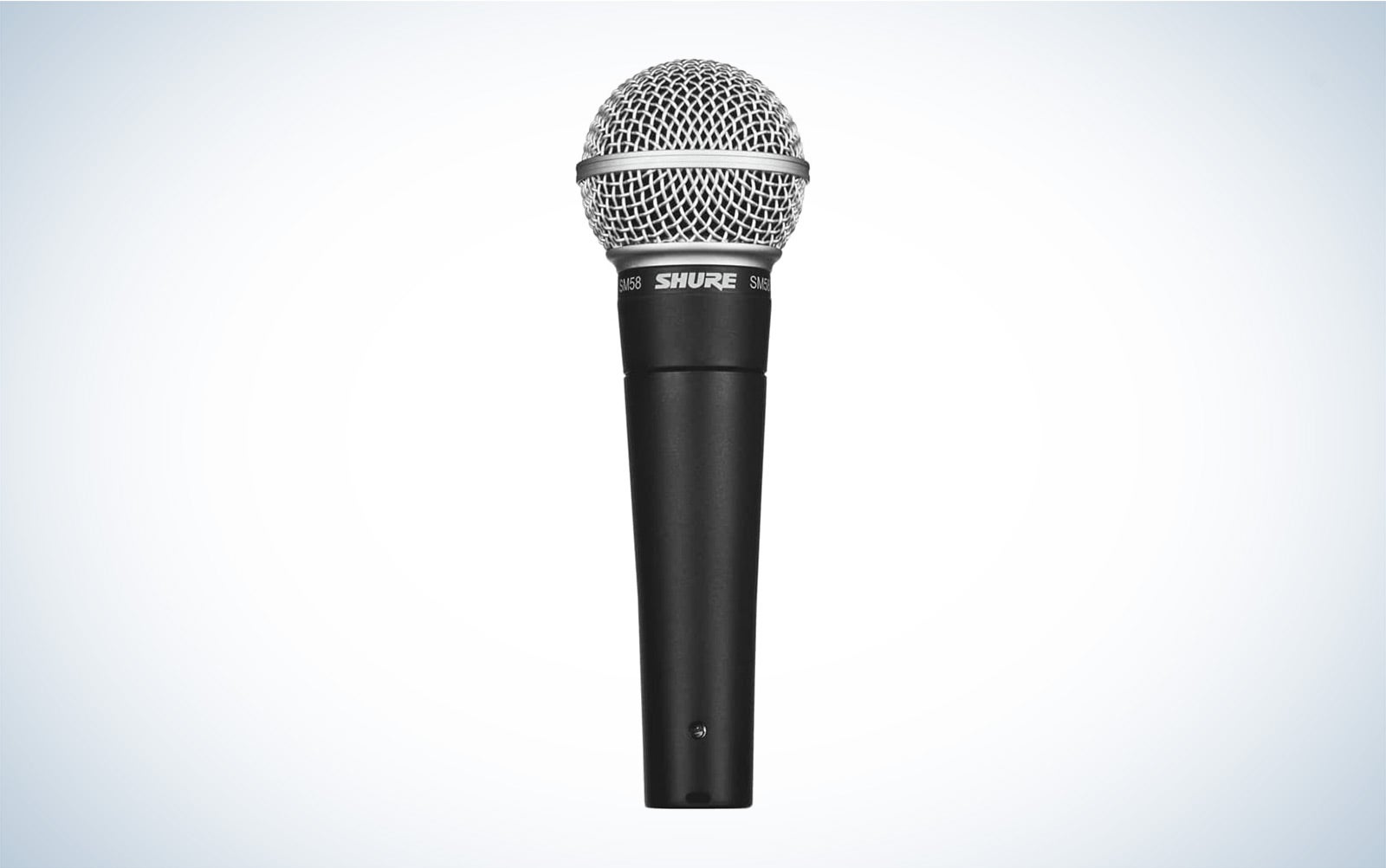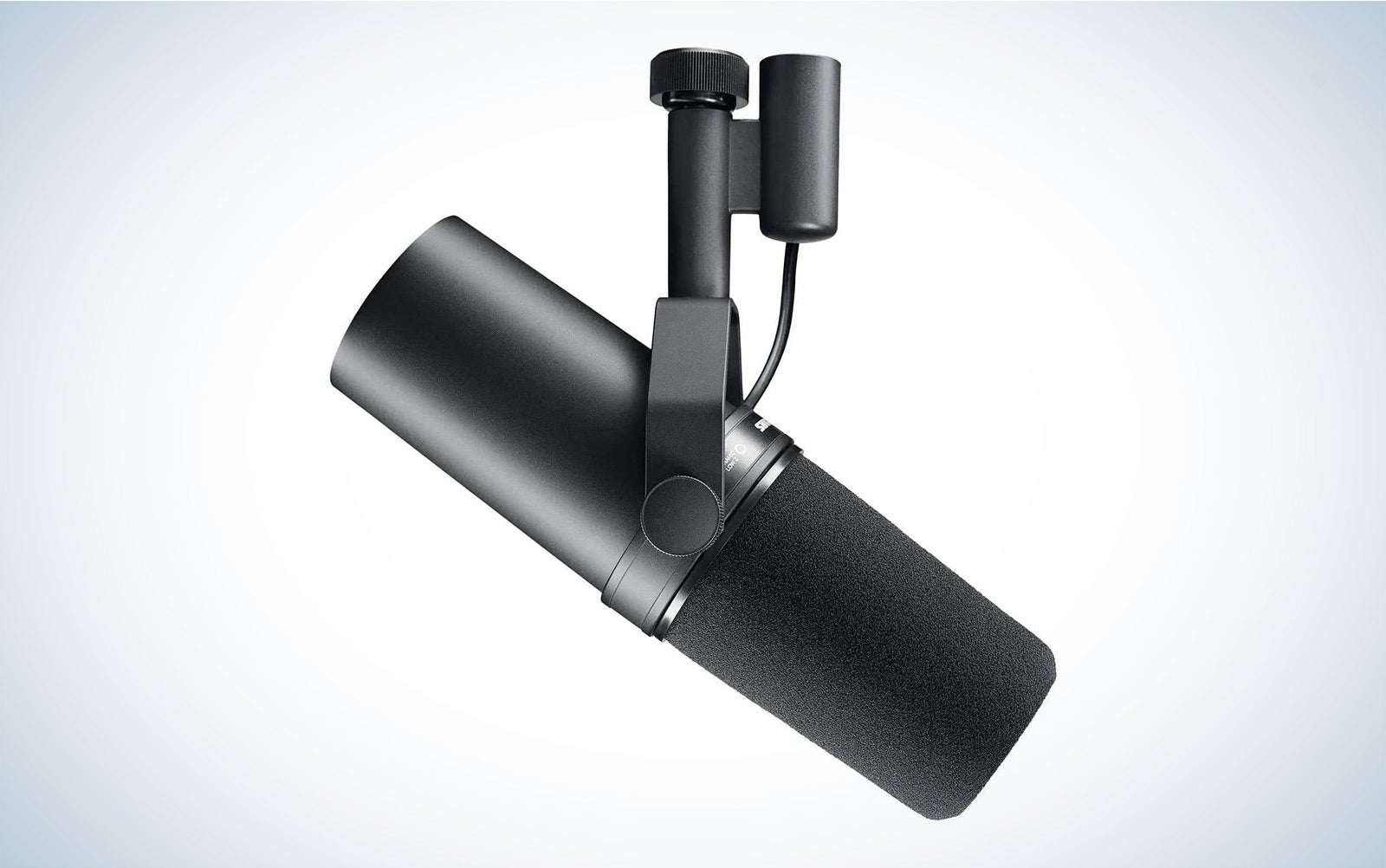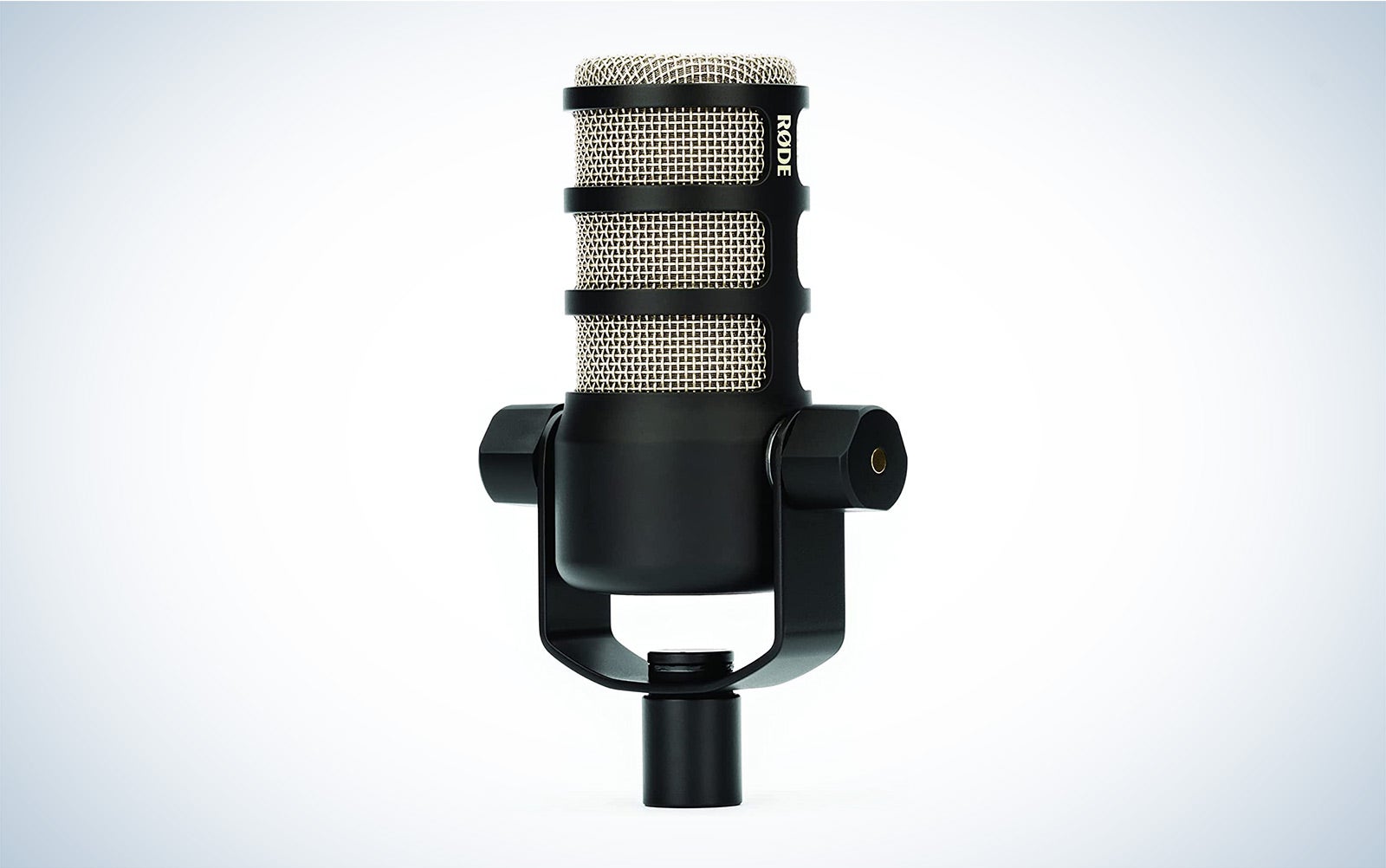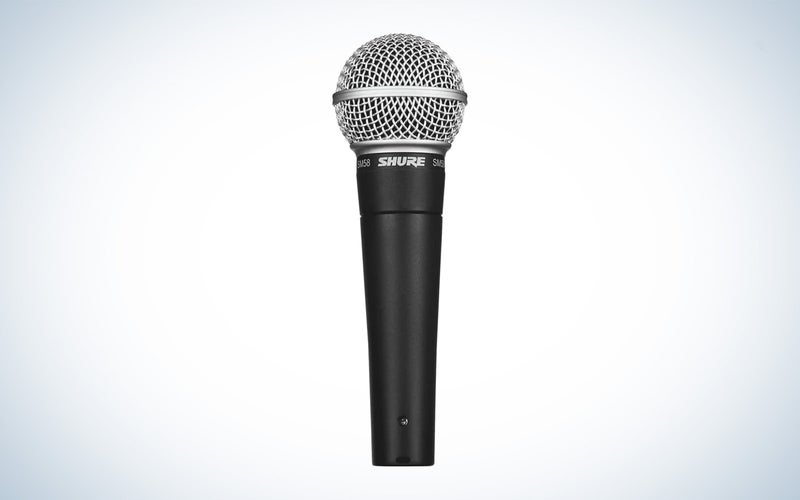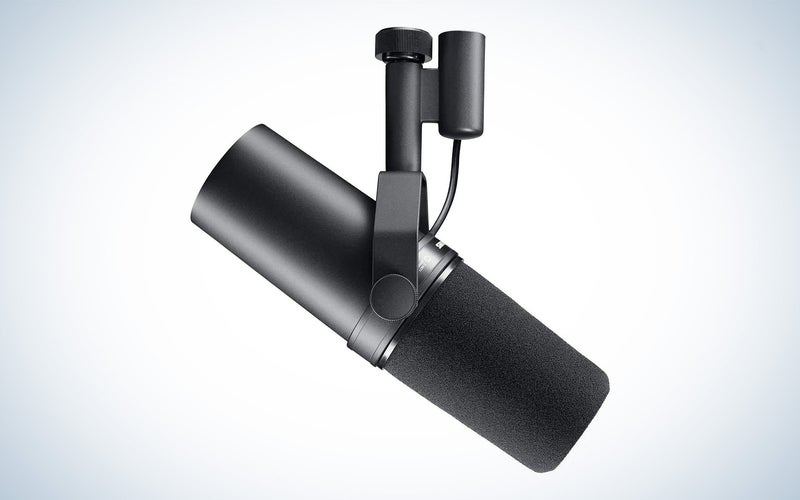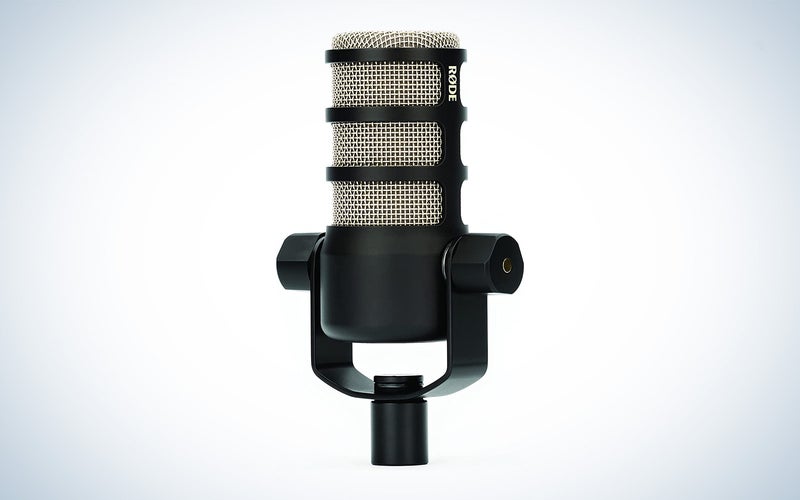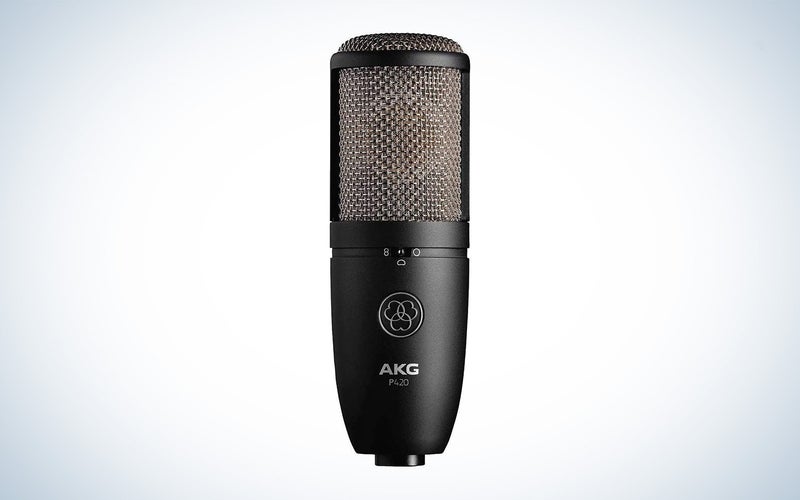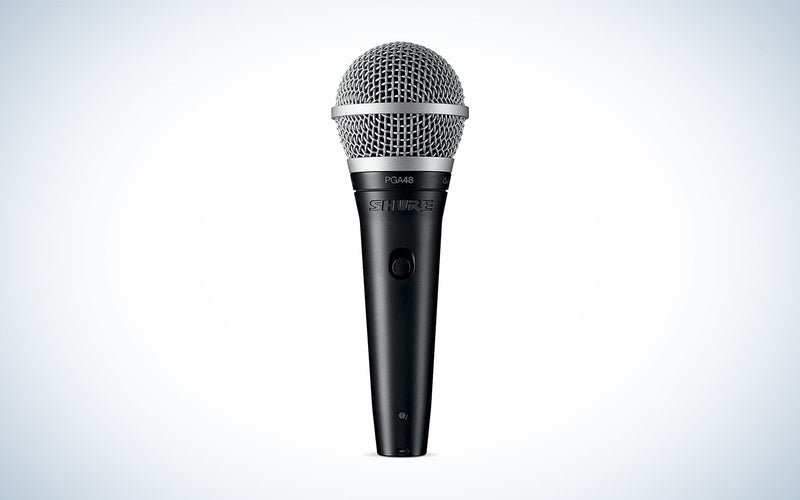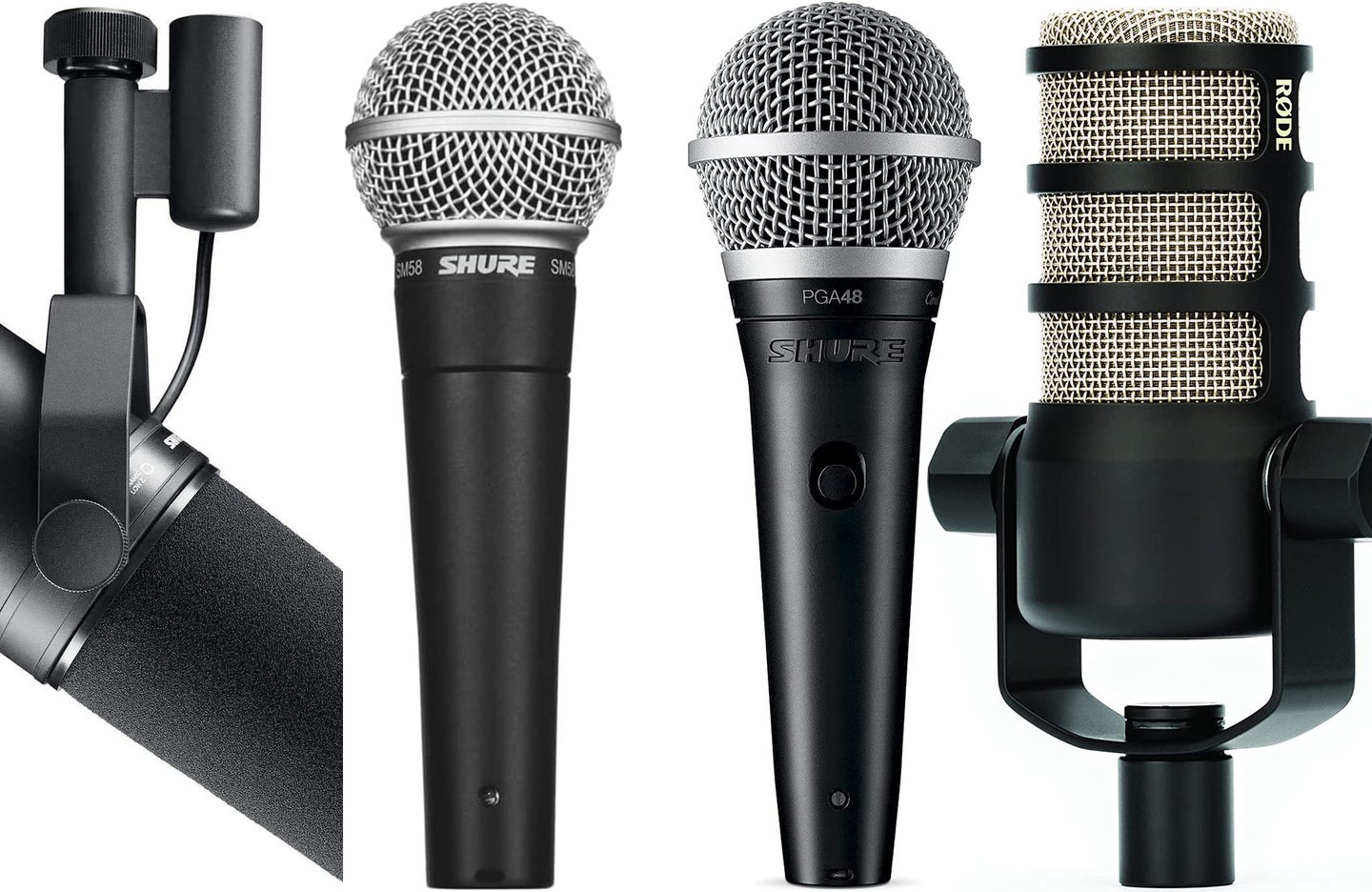
We may earn revenue from the products available on this page and participate in affiliate programs. Learn more ›
XLR microphones are considered the industry standard and can be found in professional studios and with live performers on stage. An XLR mic will give you the highest quality of balanced audio, meaning that your podcasts, live streams, performance recordings, and more will sound their absolute best.
XLR mics come in various styles, though. And not all XLR mics are created equal. The style of XLR mic that will work best for a vocal will be unique from an XLR designed to be used in the studio for podcasting. This buying guide will highlight some of the best XLR microphones for a variety of purposes.
- Best overall: Shure SM58
- Best premium: Shure SM7B
- Best for podcasting: Rode PodMic
- Most versatile: AKG Pro Audio P420
- Best budget: Shure PGA48
How we picked the best XLR microphones
The products that appear in this buying guide were selected based on how an XLR microphone might be used (in the studio vs. a live event) and to represent choices that would fit a wide variety of budgets. It was important to include higher-end studio mics alongside lower-cost XLR microphones that one might find at a live event.
The best XLR microphones: Ratings & reviews
Best overall: Shure SM58
Shure
Why it made the cut: The classic Shure SM58 is affordable, durable, and great for traveling.
Key features
- Built-in pop filter and Internal shock mount
- Uniform cardioid pattern
- 1.1 pounds
Pros
Cons
- Not great for recording instruments
The Shure SM58 is the industry standard for live performers. But it’s also an excellent choice for podcasters, gamers, guest speakers, and more. It’s a unidirectional mic—meaning it’s best at picking up whatever sound is directly in front of it. But it also has helpful features like a built-in pop filter and internal shock mount, which will eliminate distracting noises that might come from a performer or speaker handling the mic. It’s a reliable, affordable, and durable choice, which is why we’ve selected it as the best overall XLR microphone on the market.
Best premium XLR: Shure SM7B
Shure
Why it made the cut: This versatile microphone is found in high-end recording studios and is beloved by award-winning podcasters.
Key features
- Air suspension shock isolation with pop filter
- Uniform cardioid pattern
- 2.02 pounds
Pros
- Mid-range emphasis makes it ideal for capturing the human voice
- Hands-free experience
- Highly versatile
Cons
- Pricey
- Works best in a studio or in-home setup
The Shure SM7B is a high-end XLR that’s a staple in recording and podcasting studios. Its air suspension shock isolation with a pop filter means that users don’t need to worry about handling the mic, eliminating distracting noises while recording. The design also makes it great for gamers or streamers who need their hands free while recording. Although it’s more expensive than the other XLR mics in this guide, its performance in the studio is unmatched.
Best for podcasting: Rode PodMic
Rode
Why it made the cut: A budget-friendly choice for podcasters, the Rode PodMic is a hands-free XLR mic that is great for recording high-quality vocals without breaking the bank.
Key features
- Internal shock mounting system
- Unidirectional polar pattern
- 2.0 pounds
Pros
- Budget-friendly
- Hands-free operation
- Polar pattern offers well-controlled sound in a studio environment
Cons
- Not good for travel
- Accessories sold separately
The Rode PodMic is an affordable solution for podcasters and YouTubers working in the controlled environment of a home studio. This XLR mic has an internal shock mounting system and a built-in pop filter. It also has a unidirectional polar pattern designed to work best with a human speaking voice. From an aesthetics standpoint, this particular mic has a retro design that resembles the vintage broadcast mic you might find in a radio studio. It has a solid build quality, and when paired with the right accessories, it’s an excellent, budget-friendly choice for podcasters and YouTubers for capturing quality audio.
Most versatile: AKG Pro Audio P420
AKG Pro Audio
Why it made the cut: This dual-diaphragm condenser mic allows users to choose between polar patterns, making it an extremely versatile microphone for recording in a wide variety of settings.
Key features
- Dual diaphragm condenser mic
- Optional high pass filter
- 1.17 pounds
Pros
- Versatile, good for recording voices or instruments
- Capable of recording cardioid, omni, or figure-8 patterns
- High pass filter will reduce low-frequency room noise
Cons
- Requires phantom power
- Pop filter sold separately
The AKG P420 claims our spot as the most versatile XLR mic thanks to its unique dual diaphragm design. Unlike the other mics in this buying guide, you can select how the microphone will record polar patterns. This makes it a microphone that will work in a wide variety of situations. You can use it as a vocal mic, for recording instruments, or for capturing audio in an entire room. Although it comes with a shock mount, you will need to buy a pop filter separately. Operating the mic requires at least +44 phantom power, so plan for that as well.
Best budget: Shure PGA48
Shure
Why it made the cut: It’s a basic, budget-friendly XLR microphone, great for capturing audio of vocals or speakers.
Key features
- Handy on and off switch
- Unidirectional cardioid pattern
- 1.9 pounds
Pros
- Budget-friendly
- Designed for speaking and singing
- Durable build
Cons
- Not good for recording instruments
One of the least inexpensive XLR microphones on the market, the Shure PGA48 is a portable and durable option when money is tight. Of course, it won’t give you the highest quality recordings. As such, we wouldn’t recommend it for podcasting or music recording. But if you are looking for something dependable for a live performance, a speaking event, or even a karaoke night, the PGA48 should do the job without breaking the bank. The cardioid pattern will limit distracting background noises, and its silver balled grill is built tough enough to handle some abuse.
Things to consider before buying an XLR microphone
Where and what you will be recording
The number one thing you should consider before buying an XLR microphone is where you are using the microphone and what you are trying to amplify or record. For example, a shock-mounted microphone is best suited for use in the controlled environment of a studio, while a handheld microphone will make more sense for a live event with an audience in attendance.
Budget
The second thing that you should consider is your budget. XLR microphones can cost anywhere from $50 up to thousands of dollars. Where you are using the microphone and what sound you are trying to amplify or record with the microphone will usually relate to the overall microphone cost. You should expect to pay more for the equipment if you are trying to record music or a podcast in a studio setting. On the other hand, if you are looking to record live audio at a special event, a few lower-cost XLR mics will probably do the trick.
Accessories
When recording with XLR mics, you will need to invest in a few additional accessories to capture high-quality audio. XLR mics won’t work without XLR cables or some kind of interface or mixer so your computer can communicate with and record the mic. You can purchase simple, low-cost interfaces for as little as about $50, which should be plenty for podcasters or streamers. If you want to create multi-track recordings, you will need an interface that can handle multiple XLR connections.
FAQs
Q: What does XLR stand for?
XLR stands for external line run, which refers to the type of plug connection that the microphone requires. XLR microphones are one of the most common styles of microphones and have been used for much longer than USB microphones.
Q: What types of XLR microphones are there?
Microphones generally come in three varieties: dynamic microphones, condenser microphones, and ribbon microphones. But you should also pay attention to the polar pattern of the XLR microphone. Polar patterns refer to the direction in which the microphone can pick up sound. Cardioid microphones are unidirectional and pick up the most sound from directly in front of the capsule. An omnidirectional microphone will pick up sound from all sides of the capsule. Finally, a bidirectional mic will pick up sound from either side of the microphone while ignoring sound directly in front of it.
Q: Do XLR mics sound better?
Generally speaking, an XLR mic will be able to provide a much higher quality audio signal because of the XLR cable’s ability to suppress distracting noise. Although they can be a little bulkier and cumbersome to travel with when compared to a small USB mic, they do provide a more consistent sound quality.
Final thoughts on XLR microphones
XLR microphones are the best way to capture high-quality audio recordings. This is why they are the industry standard for performers, podcasters, and radio professionals. If you are looking to take your audio content to the next level, an XLR microphone will give your work a polished, professional touch.
The post The best XLR microphones for 2023 appeared first on Popular Photography.
Articles may contain affiliate links which enable us to share in the revenue of any purchases made.
